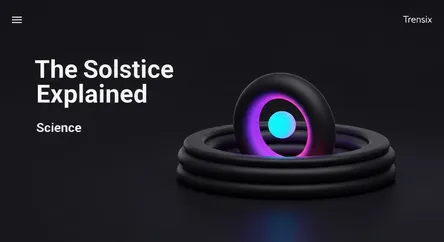Science
The Solstice Explained

Discover the science behind the solstice, the astronomical event marking the longest or shortest day of the year, driven by Earth's axial tilt.
What is it?
A solstice is an astronomical event that occurs twice a year, marking the moment when one of Earth's poles is at its maximum tilt toward or away from the Sun. This results in the longest day of the year (the summer solstice) and the shortest day of the year (the winter solstice). This phenomenon is not about Earth's distance from the Sun but is entirely due to our planet's axial tilt of approximately 23.5 degrees. When the Northern Hemisphere is tilted toward the Sun, it experiences summer solstice, while the Southern Hemisphere experiences winter solstice, and vice versa.
Why is it trending?
Solstices trend annually because they are significant celestial markers that officially begin the summer and winter seasons. These events capture public imagination and media attention, leading to widespread discussion about changing daylight hours and astronomical science. Historically, solstices have been crucial for agricultural planning and have been central to cultural and religious celebrations for millennia, with ancient sites like Stonehenge aligned to them. This blend of science, history, and cultural relevance ensures the solstice remains a popular topic of conversation and celebration each June and December.
How does it affect people?
The solstice has a direct impact on daily life by determining the amount of daylight we receive. This can influence everything from energy consumption and daily routines to psychological well-being, with links to conditions like Seasonal Affective Disorder (SAD). Culturally, it's a powerful symbol of change and renewal, inspiring festivals, gatherings, and traditions across the globe. For agriculture, it marks a critical point in the growing season. It serves as a tangible connection to the Earth's cycles, reminding us of the planet's movement through space and its effect on our environment and lives.